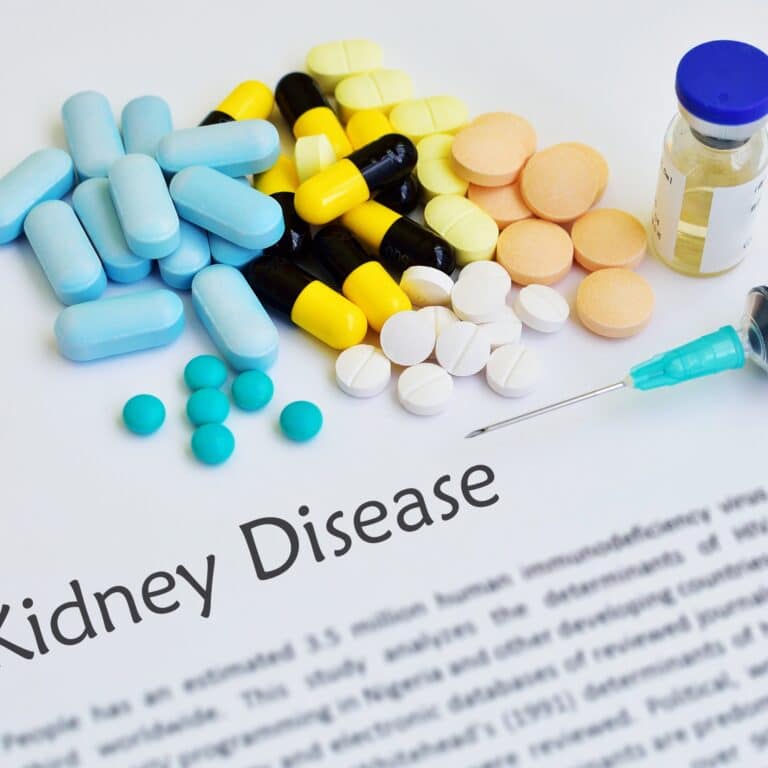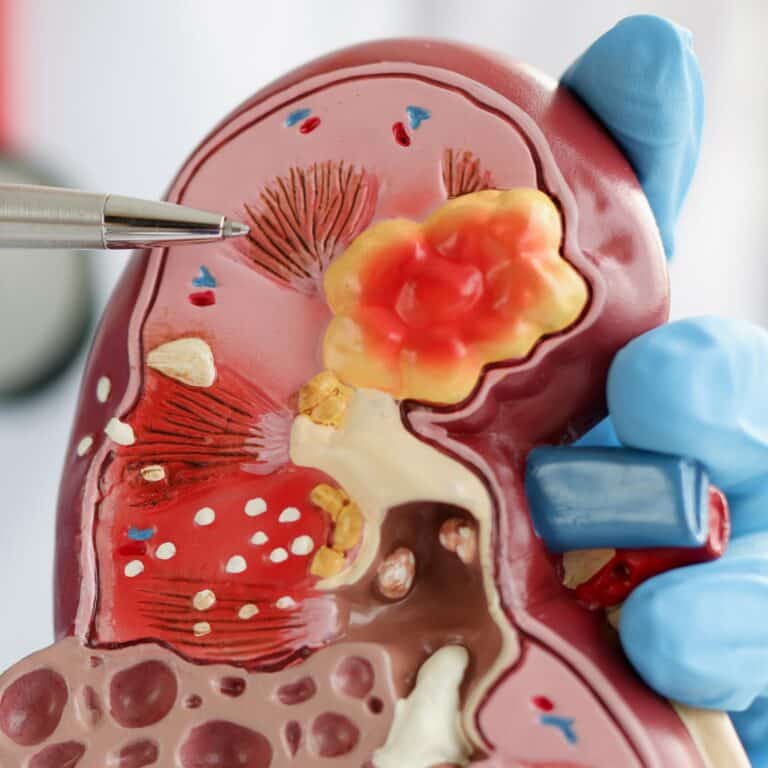Phosphorus In Your Body
Do you know what role phosphorus plays in your body?
This essential mineral is crucial for maintaining strong bones and teeth, as well as regulating nerve and muscle function. However, too much phosphorus can lead to health problems, such as heart disease and weak bones.
It's important to understand where dietary phosphorus (low phosphorus foods) comes from and how to monitor your levels for optimal health. In this article, we will explore the functions of phosphorus in the human body and how it is regulated.

We'll also take a closer look at the recommended daily intake of phosphorus, sources of this mineral in food, and factors that affect its absorption.
Additionally, we will discuss the potential risks (risk factors for ckd) associated with excessive or deficient levels of phosphorus and why individuals with chronic kidney disease should pay particular attention to their phosphorus intake.
By understanding more about this critical nutrient, you can make informed choices about your diet and overall health.
Jump to:
- Key Takeaways
- Functions in the Body
- Regulation of Phosphorus Levels
- Recommended Daily Intake
- Sources of Phosphorus
- Absorption of Phosphorus
- Phytic Acid and Phosphorus
- Inorganic Phosphorus Additives
- Deficiency and Toxicity
- Phosphorus Restriction in CKD
- Educational Resources and References
- FAQs About Phosphorous Levels
- Your Knowledge On Phosphorus Can Safeguard You From Complications
Key Takeaways
- Phosphorus plays multiple roles in the human body, including being a key element of bones and teeth, activating enzymes, regulating the normal function of nerves and muscles, and being a building block of genes and ATP.
- The kidneys, bones, and intestines tightly regulate phosphorus levels in the body, and excess phosphorus can promote the calcification of heart arteries and increase inflammation leading to coronary disease.
- The foods highest in phosphorus are animal proteins, which also tend to be high in other components related to cardiovascular disease, like saturated fat.
- Inorganic phosphorus additives are commonly found in processed meats, baked goods, and beverages like soda, iced teas, and flavored waters, and avoiding phosphorus additives can lower phosphorus intake.
For More Recipes and Ideas --->> Get Your Free Meals and Recipes That Are Perfect for Pre-Dialysis Diets, Pre-Dialysis with Diabetes, or Dialysis Diets.
Functions in the Body
Did you know that phosphorus is essential for more than just building bones? It also plays a crucial role in activating enzymes and regulating nerve and muscle function. This mineral is critical for your body's metabolism, as it helps to produce energy by converting food into ATP, the primary source of energy for cells.
Phosphorus has many benefits for your health. It supports healthy kidney function and balances electrolytes in the human body. Phosphorus also aids in the formation of DNA and RNA, which are necessary for cell growth and repair. It even contributes to the maintenance of a healthy pH balance in your blood.
Imbalances in phosphorus levels can lead to serious health problems. Too little phosphorus can cause muscle weakness, bone pain, anemia, and poor appetite. On the other hand, too much phosphorus can lead to kidney damage, heart disease (ckd and heart disease), weakened bones, muscle cramps, and skin itching.
Maintaining proper levels of this vital mineral is crucial for overall health and well-being.
Regulation of Phosphorus Levels
You may not realize it, but your body works hard to maintain the right balance of minerals necessary for optimal health and function. Phosphorus is one of these essential minerals that's regulated by several organs in your body, including the kidneys, bones, and intestines.
Hormonal regulation plays a critical role in maintaining phosphorus balance by controlling its absorption from food and excretion through urine.
Here are some factors that affect phosphorus balance in your body:
- Dietary factors: The foods you eat can significantly impact your phosphorus levels. Animal proteins like meat, poultry, fish, and dairy products contain high amounts of easily absorbable phosphorus. In contrast, plant-based sources like legumes and whole grains have less absorbable forms due to phytic acid content. Processed foods also contain added inorganic phosphate preservatives that contribute to higher intake.
- Medication interactions: Certain medications used to treat kidney disease or osteoporosis may interact with phosphorus metabolism or interfere with hormone signaling pathways involved in regulating bone health.
- Clinical implications: Imbalances in phosphorus levels can lead to severe clinical consequences such as secondary hyperparathyroidism (SHPT) and vascular calcification that increase mortality risk among patients with chronic kidney disease. Therefore, regular monitoring of serum phosphate levels is crucial for managing CKD patients' dietary needs.
- Hormonal regulation: Parathyroid hormone (PTH), vitamin D, and fibroblast growth factor-23 (FGF-23) are three key hormones involved in maintaining phosphorus homeostasis by regulating its absorption from food or excretion through urine.
In summary, achieving optimal phosphorus balance requires careful attention to dietary choices and medication use while considering hormonal regulation's complex interplay on bone health and mineral metabolism.
Consulting with a registered dietitian or health care provider can help develop personalized strategies for managing your phosphorus levels based on individual needs and medical conditions.

Recommended Daily Intake
To maintain a healthy balance of essential minerals, it's important to know the recommended daily intake of phosphorus and other nutrients. The Recommended Dietary Allowance (RDA) for adults is 700 milligrams per day, but this can vary depending on factors such as age, gender, and pregnancy status.
While it's possible to get enough phosphorus through diet alone by consuming foods like dairy products, meat, fish, poultry, nuts, beans, and whole grains, some individuals may require supplements due to certain medical conditions or dietary restrictions. It's important to speak with a healthcare provider before taking any supplements as high doses of phosphorus can be harmful.
Understanding your personal needs for phosphorus intake can help you maintain optimal health and prevent potential health problems associated with either deficiency or excess levels of this vital mineral.
Sources of Phosphorus
Phosphorus is found in both plant and animal-based foods, but animal proteins tend to be higher in phosphorus than plant-based options.
Red meat, poultry, seafood, beans, nuts, and dairy products are all high in phosphorus. However, phytic acid found in seeds, legumes, and whole grains can reduce the absorption of phosphorus from these plant-based sources.
It's important to be aware of hidden food sources of phosphorus as well. Inorganic phosphorus additives are commonly found in processed meats, baked goods, and beverages like soda and iced tea. Fast food options also tend to be high in phosphorus due to added preservatives and flavorings.
But there are low-phosphorus options available too! Cream cheese, light-colored sodas, vegetables like green beans or carrots, cream of wheat cereal and non-dairy alternatives can be good choices for those trying to balance their intake.
To sum up, here is a list of foods that should be either avoided or only eaten in moderation due to their high phosphorus content:
- Dairy products such as milk, yogurt, and some cheeses
- Organ meats such as livers
- Shellfish
- Beans and peas
- Nuts and seeds
- Whole grain breads
- Bran and oatmeal
- Dark sodas
All of these products contain high levels of phosphorus and should be avoided when possible. If you must eat them, you should only do so very moderately.
Balancing your intake of phosphorus is key for maintaining overall health. Understanding which foods contain higher levels of this mineral can help guide dietary decisions and promote healthy bones and organ function.
Consult with a dietitian or healthcare provider for personalized guidance on managing your phosphorus levels while still enjoying a varied diet full of nutritious options.
Absorption of Phosphorus
Phosphorus is an essential mineral that plays a crucial role in various biological processes, including bone formation, energy metabolism, and cell signaling. In the body, phosphorus absorption primarily occurs in the small intestine through active transport mechanisms.
However, in individuals with chronic kidney disease (CKD), the normal regulation of phosphorus metabolism becomes impaired, leading to increased serum phosphorus levels, a condition known as hyperphosphatemia.
In CKD, the kidneys are unable to efficiently excrete excess phosphorus, resulting in its accumulation in the bloodstream. Elevated phosphorus levels can have detrimental effects on health, such as cardiovascular complications, bone disease, and increased mortality rates. To mitigate these risks, healthcare providers often prescribe phosphate binders as part of the treatment regimen for individuals with CKD.
Phosphate binders are medications designed to reduce the absorption of phosphorus from the diet, thereby lowering its concentration in the bloodstream. These binders work by binding with dietary phosphorus in the digestive tract, forming insoluble complexes that cannot be absorbed into the body.
Commonly used phosphate binders include calcium-based binders, aluminum-based binders, and newer options like sevelamer and lanthanum carbonate.
By effectively reducing the absorption of phosphorus, phosphate binders help maintain serum phosphorus levels within the recommended range, thereby preventing or slowing the progression of complications associated with hyperphosphatemia (progression of symptoms for CKD).
However, it is important to note that phosphate binders should be used under the guidance of a healthcare professional, as their effectiveness and dosage may vary depending on individual patient factors and specific needs.
In conclusion, the absorption of phosphorus in the body is a tightly regulated process that can be disrupted in individuals with chronic kidney disease. Phosphate binders play a crucial role in managing hyperphosphatemia by limiting the absorption of dietary phosphorus, thus helping to prevent complications associated with elevated phosphorus levels.
Phytic Acid and Phosphorus
You may have heard of phytic acid, a compound found in plant-based foods like seeds and legumes that can inhibit the absorption of minerals. Phytic acid is considered an anti-nutrient because it binds to phosphorus and other minerals in the gut, preventing their absorption into the body.
This means that even though plant-based diets are often high in phosphorus, not all of it is available for use by the body.
Soaking, sprouting, and fermenting grains and legumes can reduce their phytic acid content and increase mineral availability. While a diet rich in plant-based foods can provide adequate phosphorus levels, it's important to consider how phytic acid affects its absorption.
Because phosphorus is less absorbed from plant sources, this can be good news for people with kidney disease as this can help prevent the accumulation of phosphorus in the body.
A varied diet including both animal- and plant-based sources of phosphorus is recommended for optimal health (plant based recipes for kidney disease).
Inorganic Phosphorus Additives
Did you know that many processed foods and beverages contain inorganic phosphorus additives that can negatively impact your health? These additives are added to foods to enhance the texture, flavor, and shelf life of products.
Industry practices have made it difficult for consumers to identify which products contain phosphorus additives which poses additional challenge for people with kidney disease who need to watch their phosphorus intake.
Many manufacturers do not list the exact amount of phosphorus on their food labels or use alternative names for phosphorus additives such as 'sodium phosphate' or 'calcium phosphate.'
This lack of transparency makes it challenging for individuals with chronic kidney disease or other conditions that require a low-phosphorus diet to make informed decisions about their food choices.
Here are some of the phosphorus additives that can be found in processed foods:
- Dicalcium phosphate
- Disodium phosphate
- Monosodium phosphate
- Phosphoric acid
- Sodium hexameta-phosphate
- Trisodium phosphate
- Sodium tripolyphosphate
- Tetrasodium pyrophosphate
Consumer awareness is key in reducing the negative impact of phosphorus additives on our health. Reading nutrition labels carefully and avoiding processed foods whenever possible can greatly reduce your intake of inorganic phosphorus. Additionally, choosing fresh fruits and vegetables over packaged snacks can limit exposure to these harmful chemicals.
Deficiency and Toxicity
Now that you know about the sources of inorganic phosphorus additives, let's talk about the consequences of having too little or too much phosphorus in your body.
A deficiency in phosphorus, also known as hypophosphatemia, is rare and can cause a range of symptoms. These include poor appetite, anemia, muscle weakness, bone pain and disease, confusion, increased susceptibility to infections, and toxicity.
On the other hand, hyperphosphatemia is a toxicity from having excessive levels of phosphorus in your blood. This condition is also rare but can result in dangerous calcium deposits in your blood vessels and hardening of soft tissues and connective tissues in your body.
Patients with chronic kidney disease are at higher risk for both deficiency and toxicity due to their kidneys' inability to regulate normal levels effectively.
Symptoms management and treatment options differ depending on whether you have a deficiency or excess levels of phosphorus. Prevention strategies for hyperphosphatemia include dietary restrictions such as avoiding high-phosphorus foods like dairy products or processed foods with added phosphate preservatives (processed foods and CKD); taking phosphate binders prescribed by a doctor or dietitian; increasing fluid intake; undergoing dialysis if necessary; and following medication regimens carefully.
If you suspect you have abnormal levels of phosphorus in your system, consult with a physician immediately.

Phosphorus Restriction in CKD
To follow dietary guidelines for managing chronic kidney disease, you will need to be mindful of foods that are high in phosphorus. Some examples include dairy products, nuts, beans, and whole grains.
While it may seem daunting at first, there are still plenty of options available for those following a restricted diet. For instance, low-phosphorus alternatives like cream cheese and non-dairy milks can help you meet your nutritional needs without compromising on taste.
Despite your phosphorus restrictions, there are still a variety of foods that you can eat.
- Light colored sodas like ginger-ale or lemon lime sodas
- Cream cheese
- Vegetables of all sorts
- Cream of wheat cereal
- Popcorn
- Sherbet or fruit popsicles
- White bread, bagels, crackers
In addition to dietary restrictions, there are management strategies such as phosphate binders that can help control the amount of phosphorus absorbed from foods. Medications and supplements may also be prescribed by your doctor or dietician to support healthy phosphorus levels in the body.
Patient experiences vary greatly when it comes to living with chronic kidney disease, but by working closely with healthcare professionals and adhering to recommended guidelines for managing this condition, you can improve your quality of life and overall health outcomes.
Here are some other food options that you can enjoy:
| High Phosphorus Foods | Low Phosphorus Alternatives |
| Dairy (milk, cheese) | Non-dairy milk (almond milk) |
| Beans | Vegetables (broccoli) |
| Nuts | Cream cheese |
| Whole grains | Cream of wheat cereal |
Table: Examples of high phosphorus foods versus low phosphorus alternatives
Educational Resources and References
Utilizing educational resources and references is crucial for understanding how to manage chronic kidney disease and maintain healthy phosphorus levels.
Online courses, research studies, support groups, educational videos, and online forums are some of the valuable resources available to individuals looking to educate themselves on this topic.
These materials can help with understanding the basics of kidney disease, learning about dietary restrictions and recommendations, finding ways to cope with symptoms, and connecting with others who are going through similar experiences.
Online courses offer a structured way to learn about chronic kidney disease management. These courses cover topics such as nutrition guidelines for renal patients, medications used in treating CKD-related complications, dialysis options and procedures, transplant information, and other relevant topics.
Support groups offer a space where patients can connect with others who understand what they are going through emotionally and physically.
Educational videos provide visual aids that may be helpful in understanding complex medical concepts related to CKD management. They also offer tips on meal planning ideas or cooking techniques for those following a low phosphorus diet.
Online forums allow people affected by CKD to interact with each other virtually - sharing their experiences or seeking advice from peers or professionals.
In summary, utilizing educational resources such as online courses, research studies, support groups, educational videos, and online forums can be valuable tools in managing chronic kidney disease effectively while maintaining healthy phosphorus levels.
It's important to seek out reputable sources of information when educating oneself about this topic; being informed empowers individuals living with CKD towards better self-management of their condition while improving overall quality of life.
FAQs About Phosphorous Levels
Excess phosphorus in the body can disrupt the hormonal balance of calcium, phosphorus, and vitamin D. Elevated phosphorus levels lead to the suppression of the active form of vitamin D, known as calcitriol, which is crucial for calcium absorption in the intestines. This results in decreased calcium absorption and can lead to hypocalcemia.
Additionally, high phosphorus levels stimulate the release of parathyroid hormone (PTH) from the parathyroid glands. PTH acts to increase calcium levels by promoting calcium release from bones and enhancing kidney reabsorption of calcium.
However, PTH also increases phosphorus levels further, creating a negative feedback loop. This hormonal imbalance can contribute to mineralization disorders, such as renal osteodystrophy, and other complications in conditions like chronic kidney disease.
Yes, there are non-dietary factors that can affect phosphorus levels in the body. One significant factor is kidney function. The kidneys play a crucial role in regulating phosphorus balance by excreting excess phosphorus through urine.
In conditions like chronic kidney disease (CKD), where kidney function is impaired, the ability to eliminate phosphorus decreases, leading to elevated phosphorus levels in the bloodstream. Hormonal imbalances, such as abnormalities in parathyroid hormone (PTH) levels, can also impact phosphorus metabolism.
Certain medications, such as certain diuretics or phosphate-containing laxatives, can affect phosphorus levels as well. Additionally, factors like vitamin D deficiency or certain genetic disorders can influence phosphorus metabolism and contribute to abnormal phosphorus levels in the body.
hosphorus supplements can be harmful to the body if taken in excess of the recommended intake, especially for individuals with impaired kidney function. While phosphorus is essential for bone health and other bodily functions, too much of it can lead to toxicity levels that cause negative effects on health.
Supplement safety depends on proper dosing and monitoring of phosphorus levels in the body. It's important to consult with a healthcare professional, such as a doctor or registered dietitian, before taking any supplements containing phosphorus. They can provide personalized guidance based on your individual needs and ensure that you're not exceeding safe levels of phosphorus intake.
A low phosphorus diet can have a significant impact on overall nutrition, especially for those with chronic kidney disease or renal failure. It's important to monitor and limit high phosphorus foods such as dairy products, organ meats, shellfish, beans, nuts, and whole grains as excess phosphorus can lead to health problems and weaken bones.
However, a restrictive diet still allows for many food options such as light-colored sodas, cream cheese, vegetables, cream of wheat cereal, and non-dairy alternatives that are low in phosphorus and safe to eat. Reading nutrition labels (read labels carefully as a kidney patient) is crucial in identifying the phosphorus content and serving sizes of foods.
Consulting with a physician or dietician for personalized dietary needs is also recommended. Overall, maintaining healthy phosphorus levels is key to living healthy with kidney disease while still ensuring proper nutrition intake.
If you cannot consume animal products, there are still plenty of plant-based sources of phosphorus available. Some vegan-friendly sources include lentils, chickpeas, tofu, sunflower seeds, and pumpkin seeds.
Additionally, fortified foods like non-dairy milks and cereals can provide a good source of phosphorus. It's important to note that supplements should only be taken under the guidance of a healthcare professional as improper intake can lead to negative health consequences.
Overall, incorporating a variety of natural sources into your diet is the best way to ensure adequate phosphorus intake while adhering to a plant-based lifestyle.
Your Knowledge On Phosphorus Can Safeguard You From Complications
When you are living with chronic kidney disease or renal failure, there are certain guidelines and dietary restrictions that you need to follow. Often, knowing what you can eat is tough to discern through all of the many restrictions.
You can actually find plenty of options to eat despite all of the restrictions if you know what to look for. Most renal patients (renal restricted diet) know that they need to monitor and avoid sodium, but there are other things to look out for as well. For example: potassium, and the lesser known phosphorus.
Phosphorus is a mineral that is found in your body, specifically in your bones. Phosphorus is also found in many foods.
If your body is unable to properly filter out and discard excess phosphorus, this could lead to a buildup. A build up of phosphorus can be dangerous to your health.
Knowing about phosphorus and how to maintain healthy levels in your system is the key to living healthy. Talk to your physician and/or dietician about what your specific dietary needs are, and how much phosphorus is safe for you to consume. Every patient is different, so knowing your own specific guidelines is safest.
















